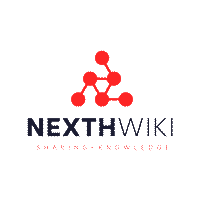Shanghai Stock Exchange STAR Market
Shanghai Stock Exchange STAR Market
The Shanghai Stock Exchange STAR Market, officially known as the Shanghai Stock Exchange Science and Technology Innovation Board, is a specialized equities market focused on science and technology companies. It was established on July 22, 2019, with the goal of providing Chinese tech firms greater access to capital markets, similar to the role of Nasdaq in the United States[2].
Mission and Vision
The STAR Market aims to:
- Enhance the capability to serve technological innovation.
- Promote high-quality development of China's economy.
- Support the construction of Shanghai as an International Financial Center and an Innovation Center of Science and Technology.
- Promote market-oriented reform of the capital market.
- Improve the multi-tiered capital market and accumulate experience for capital market infrastructure[3][6].
Key Principles
The STAR Market operates on several key principles:
- Respecting market laws and stabilizing market expectations.
- Improving the legal system of the capital market and strengthening supervision.
- Establishing a stock issuance and listing system centered on information disclosure.
- Developing synergy between relevant government departments to promote stable and healthy market development[3][6].
Positioning and Targeted Industries
The STAR Market is positioned to:
- Serve the frontier in global science and technology sectors.
- Support enterprises that align with national strategies, hold core technologies, and enjoy market recognition.
the STAR Market focuses on several key industries that align with China's strategic priorities and technological innovation goals. Here are the main industries targeted by the STAR Market:
- New Generation Information Technology: This includes sectors such as computer applications, semiconductors, and advanced IT equipment.
- Biomedicine and Medical Devices: The STAR Market has become a major global listing place for biomedical companies outside the United States and Hong Kong, with 93 listed companies in this field
- Integrated Circuits: There are 55 companies in the integrated circuit sector, accounting for half of the A-share listed companies of the same type
- New Energy and Energy Conservation: This includes companies in photovoltaics, power batteries, and energy storage. Companies like Pylon Technologies (a global leader in household energy storage) and XTC New Energy Materials (a leader in lithium cobalt oxide cathode materials) are part of this sector
- High-end Equipment Manufacturing: This includes industrial robotics and other advanced manufacturing technologies
- New Materials: Companies like Yunlu Advanced Materials Technology, a leader in advanced magnetic metal materials manufacturing, represent this sector
- Environmental Protection: Some companies in this sector focus on technologies for carbon footprint calculation and environmental monitoring
These industries closely align with China's Made in China 2025 (MIC2025) initiative, with 82% of STAR-listed companies (297 firms) operating in MIC2025-targeted industries. The STAR Market supports Beijing's goal of directing financing to companies in "high-tech and strategic emerging sectors," focusing on areas where China aims to achieve technological self-reliance and leadership.
It also promotes the integration of Internet, Big Data, Cloud Computing, Artificial Intelligence, and Manufacturing[3][6].
Operation and Listing Rules
The STAR Market allows:
- Listing of companies with multiple share classes.
- Red Chip companies already listed abroad.
- Currently unprofitable companies.
The listing process is based on registration and disclosure rather than approval, making it more market-oriented. This system aims to provide Chinese companies more access to financing and support the real economy[2].
Market Characteristics
- No limits on share price movements during the first five days of trading.
- High P/E multiples, indicating high market expectations.
- Significant participation from institutional and individual investors[2].
Historical Milestones
- November 5, 2018: Announced by President Xi Jinping during the China International Import Expo.
- March 1, 2019: Key rules and guidelines released.
- March 18, 2019: Began accepting applications for listing.
- June 5, 2019: First listing committee review meeting held.
- June 13, 2019: Officially launched.
- July 22, 2019: First batch of 25 companies listed[3][6].
STAR Market ETFs
ETFs like KSTR, created by KraneShares, hold the largest companies listed on the STAR Market. These ETFs offer exposure to China's emerging markets, focusing on sectors such as new-generation information technology, biomedicine, new energy, and environmental protection[2].
Conclusion
The Shanghai Stock Exchange STAR Market is a pivotal platform for tech-focused companies in China, providing them with access to capital and supporting the country's broader economic and technological ambitions. It represents a significant shift towards a more market-oriented approach in the Chinese capital markets.
Citations:
- http://star.sse.com.cn/en/
- https://en.wikipedia.org/wiki/Shanghai_Stock_Exchange_STAR_Market
- http://star.sse.com.cn/en/gettingstarted/overview/
- http://star.sse.com.cn/en/marketdata/overview/
- https://english.sse.com.cn
- http://www.sse.com.cn/star/en/home/
- https://www.lseg.com/en/data-analytics/financial-data/pricing-and-market-data/equities-market-data/shanghai-stock-exchange-data
- https://www.ciis.com.hk/hongkong/en/scitech/index.shtml
